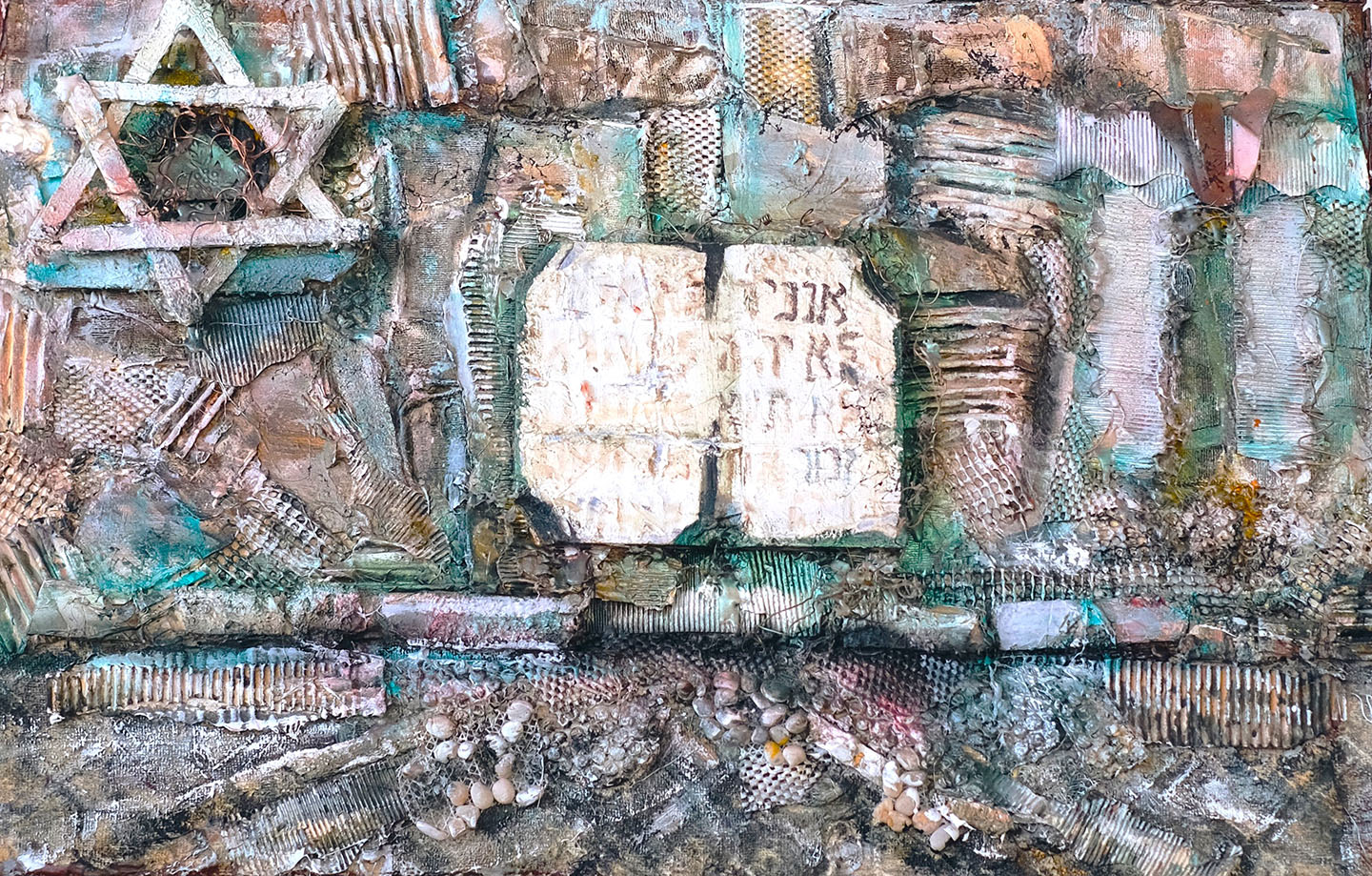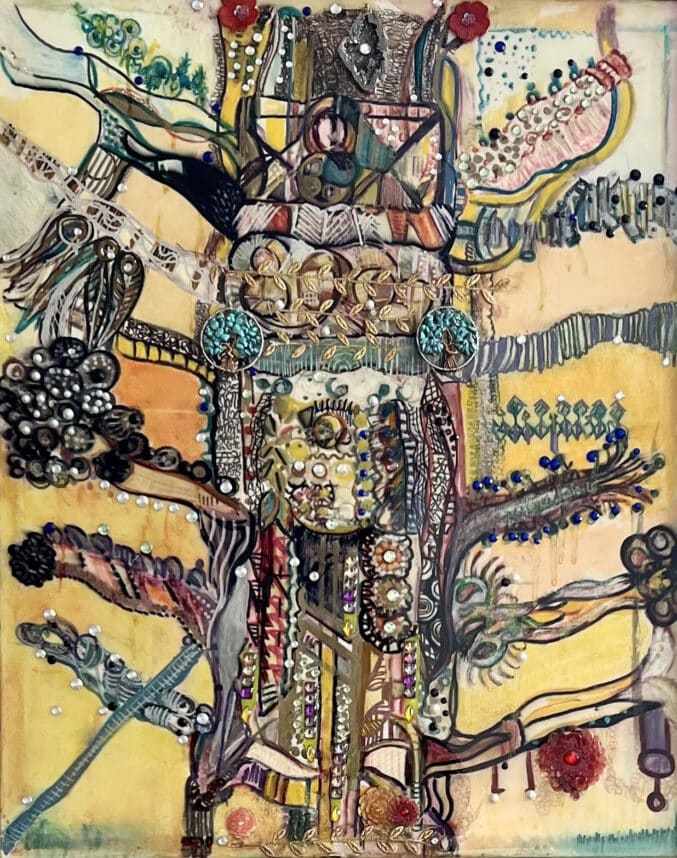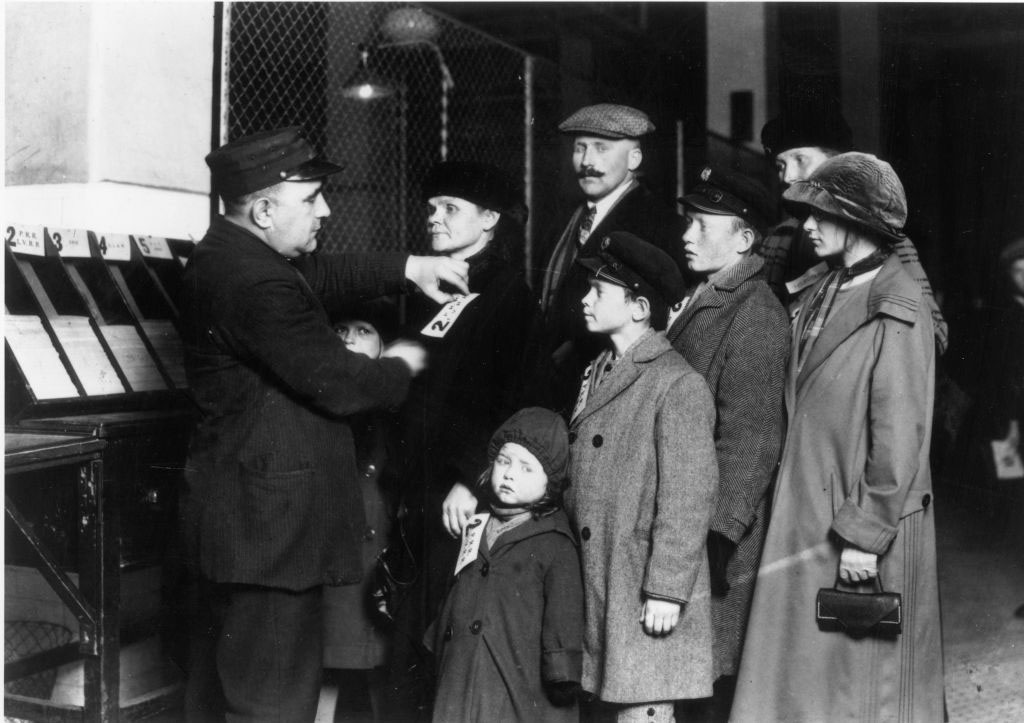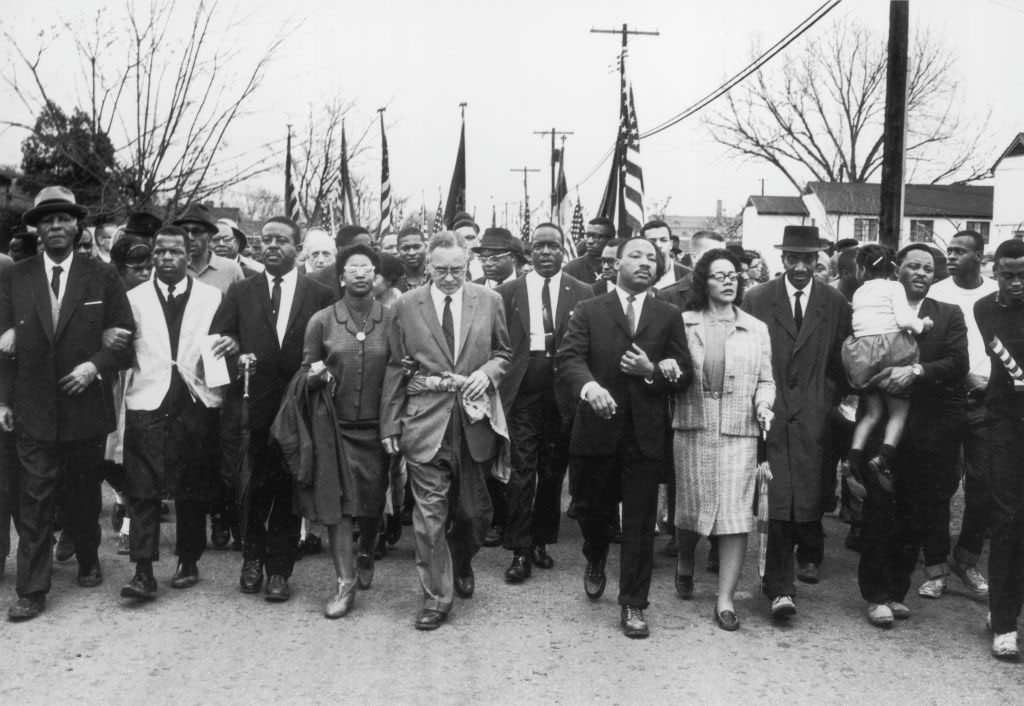 Ten Commandments. Sandy Lee.
Ten Commandments. Sandy Lee. Jews have immigrated to the United States from many places around the world. We come from Iran. We come from England, France and Germany. We come from Israel, Egypt and Turkey. And we come from South Africa. Many immigrants from these cultures stick together when arriving in the United States, and stay connected even as they reach out and grow into the wider cultural landscape.
Yet, what is lost and what remains? How do we express the longing we feel for our distant, former homelands? If you are an artist, you express your deep longing by creating original pieces that combine the unique qualities of your soul with your cultural heritage, seeking to blend and make sense of all of your past experiences.

Sandy Lee’s art uses textures and shapes, form and color, to captivate and entrance viewers, artists, art lovers and art collectors alike. This artist, who lived from 1939 to 2020, passed away at 81, and is now represented by her daughter, Gabby Friedenthal. Friedenthal has helped organize an incredible retrospective of her mother’s artwork. The Art of Sandy Lee exhibit is now on view at the new 7811 Gallery on Melrose Avenue through July 18. This remarkable show captures something timeless and profound about the immigrant experience. Through her art, Lee shares with us what is in her heart.
Lee was born in and grew up in South Africa, where she attended a synagogue. As a Jewish woman, she identified with the Zionist struggle for Israel and the grave loss that occurred during the Holocaust. Both her mother’s and father’s families were from Lithuania. Her father, Maurice (Moise) Traub, was from the Shtetl of Posvol, now Pasvalys, near the Latvian border. He arrived in South Africa in 1932-33 and married Lee’s mother, whose family had been in South Africa for a few generations. Lee married Ezra Lee and they had four children, Murray, Gregory (Greg), Monise and Gabrielle (Gabby.)
In 1975, Lee and her family decided to join other families and leave South Africa for California. Lee carried the people, the colors and the rich texture of life unique to Africa with her. This desire to express the fullness of her life, and to reach across cultural and geographic boundaries informs her work.

The shapes in Lee’s art blend together in dreamy forms and strike out dancing; bits of tiles and beads make up limbs. We feel the beat, as people dance together. The African women in her pieces lived on the land for thousands of years before Western immigrants arrived and colonization occurred. Lee’s work seems to say: “These are my people too. These are the people I saw and interacted with on a daily basis. These are the people I miss. These are the people I love.”
Lee’s kinship with the women who inhabit her paintings is clear. We feel their strength and resilience. They are wives and mothers. They are heroic women who feed their children when there is little food left, who struggle to make ends meet, and who defy the odds to raise their families.
Living in Southern California, in Santa Monica Canyon and raising four children, the youngest of whom was seven when the family emigrated, Lee perhaps felt unsure what she had done to deserve such a comfortable, safe and relatively-tranquil new home, while her native land continued to evolve and change. The harsh laws of apartheid hardened race relations, and then the end of apartheid brought new challenges, despite the new freedom Black people experienced. The Jewish population continues to decrease, yet a sizeable Jewish population, mostly Orthodox, remains.
Always an art lover, Lee began creating many, textured, elaborate wall hangings in the 1980s, and then began taking art courses at the Brentwood Art Center in Brentwood, California. At this very well-respected art school, Lee’s instructor asked why she held back from expressing herself fully, and urged her to give free reign to her creative, artistic vision. This is when Lee’s art began to soar. Inspiration allowed her to create a style all her own.
Always an art lover, Lee began creating many, textured, elaborate wall hangings in the 1980s, and then began taking art courses at the Brentwood Art Center in Brentwood, California.
Searching for a way to connect to her roots and the memory of her father, who passed away when she was 11, Lee studied photographs of Lithuania and became entranced with doors and windows. She began recreating them—replicating stone, wood, moss and metal—using foam, paint and wire, all from photographs and without leaving her studio.

In addition to colorful, expressive paintings, Lee created sculptural dolls and intricate assemblage pieces, combining found objects, shells, twine, beads, rope and gourds into human and architectural forms. Lee recreated the Ten Commandments and the Wailing Wall as a testament to her Jewish faith. Her art lets us know that we are not just one thing. We are the sum of all our life experiences.
Great art puts us in touch with our truest selves. It helps us feel our own uniqueness by showing us something that is one of a kind, not mass produced. In this age of cell phones and viral videos, many of us long for direct, tangible experiences and connection with others. Community offers this. Art also keeps us company in quiet times and can be a dear friend. It is easier to take care of than a pet and offers some of the same rewards. Granted art does not go for walks with you, but it does serve as a convenient conversation piece when someone visits your home.
Art also inspires us to create our own visions, to bake, to garden, to connect to something eternal that is also tangible. Such is the life force that pulses through the world. It is ever present, yet illusive. When this force touches down in art, we are compelled to listen and to take note, to observe with quiet wonder, and to be grateful.
The Art of Sandy Lee, a solo retrospective exhibit, is on view by appointment and on Sundays, Noon–5 pm, at 7811 Gallery on Melrose Avenue. For more information go to 7811gallery.com or email info@7811gallery.com. @7811gallery
Deborah F Blum is the gallery director and curator of 7811 Gallery, a new art gallery on Melrose Avenue in Los Angeles. She is also an artist, writer and documentary filmmaker.





















 More news and opinions than at a Shabbat dinner, right in your inbox.
More news and opinions than at a Shabbat dinner, right in your inbox.